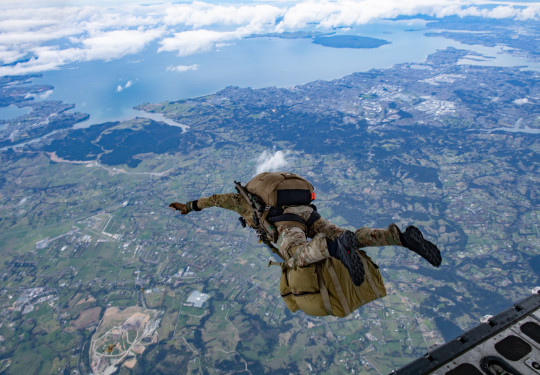Flying on silver wings
The Coromandel hosted a recent New Zealand Defence Force (NZDF) exercise involving parachute infiltration into a ‘jungle environment’.
31 May, 2024
Exercise Silver Wing is an annual assurance training exercise to test and assure the very high readiness operational capabilities of the NZDF to respond to regional or global events.
This year the exercise was focussed on a fictional reconnaissance mission, set in an island and jungle environment. Waikawau Bay was used as the exercise area as it provided environmental conditions and terrain similar to that experienced in many locations in the Indo-Pacific.
The week-long exercise included NZ Army personnel conducting full-equipment, high altitude and low opening (HALO) parachute infiltration jumps from a C-130H (NZ) Hercules. Supporting the exercise were No. 40 Squadron aircrews.
The exercise was also supported by Base Auckland's Parachute Training Support Unit (PTSU) and Base Ohakea's No. 3 Squadron NH90 helicopter aircrews. The NZ Army also provided 5 Movements Company, which specialises in, amongst many things, parachute delivery of military supplies.
Flight Lieutenant Jasmine Eyley, a C-130 navigator, was the air liaison officer between No. 40 Squadron and NZ Army.
“Our involvement this year required two days of flying, including one day of parachute rehearsals and a night-time infiltration flight into Waikawau Bay," she said.
"These infiltration flights require a fair amount of planning by the crew, and the navigator can get particularly busy providing several release point options due to weather and surrounding terrain posing some limitations on original plans.
"The jumps themselves were into the Coromandel, which was an unfamiliar drop zone for us, so having multiple options and pre-briefing these to all involved gave us the best chance of enabling success for the first phase of the mission for the troops.
“The navigator is also required to manage secure communications between the aircraft and the operations centre that NZ Army personnel manage the exercise from, in order to provide up-to-date information on mission status."
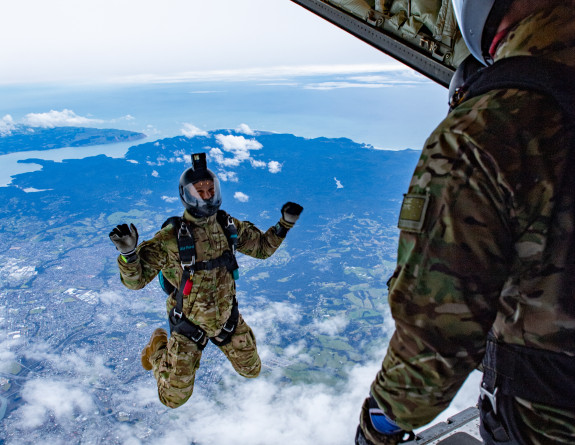
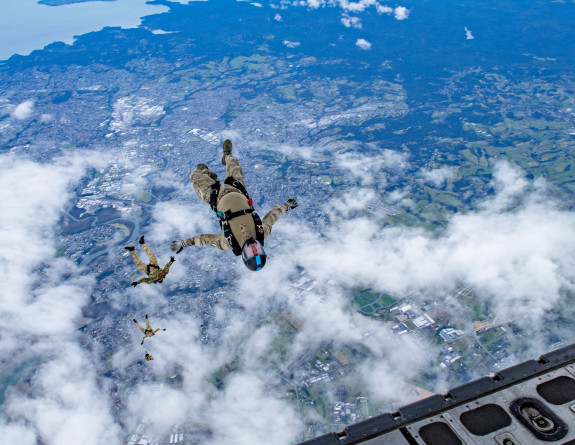
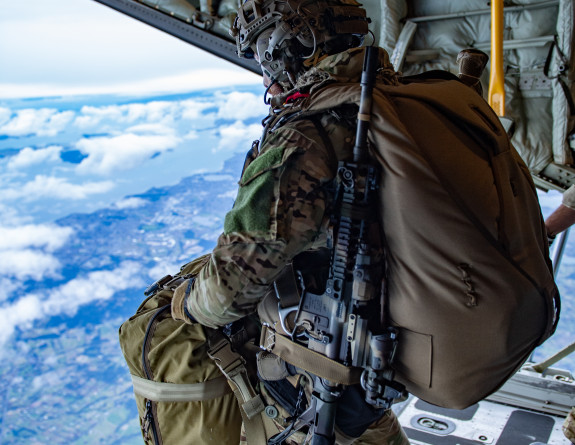
NZDF personnel jump out of a C-130H (NZ) Hercules aircraft during Exercise Silver Wing.
Tactical night flying presented its own challenges, but it was something crews dealt with relatively frequently, she said.
“Because it's high level parachuting there was no requirement for crew to wear night vision goggles, however the troops would have been operating with them. There are certainly more hazards involved for them doing a night jump into an unfamiliar drop zone, but that's what they are training to be able to do.
"That's the kind of flying that we really enjoy, it's the 'pointier end' of things, which we don't often get the opportunity to do day-to-day. A lot of people join No. 40 Squadron for the more tactical side of flying, so we enjoy the extra challenges that brings."
The exercise was a good opportunity for the squadron to work with NZ Army and PTSU, FLTLT Eyley said.
"The job they do is dynamic and forces us to be more flexible - it's beneficial in that aspect. And it's always more fun operating with new people too.”
PTSU is often seen during displays as the Kiwi Blue Parachute Display Team; however their primary role is to deliver personnel parachute training and support to the Defence Force, especially the NZ Army.
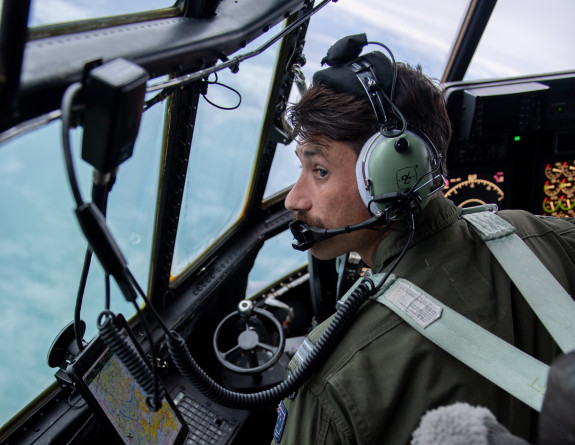
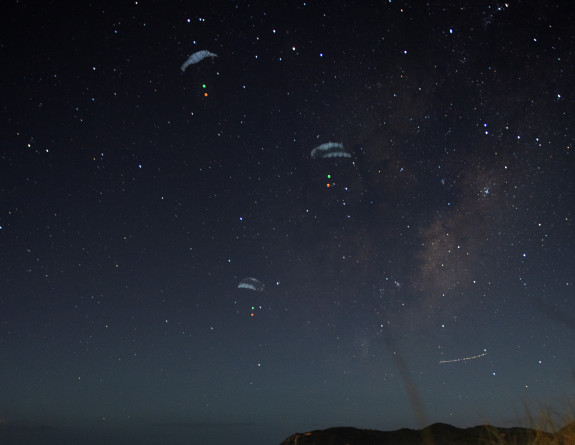
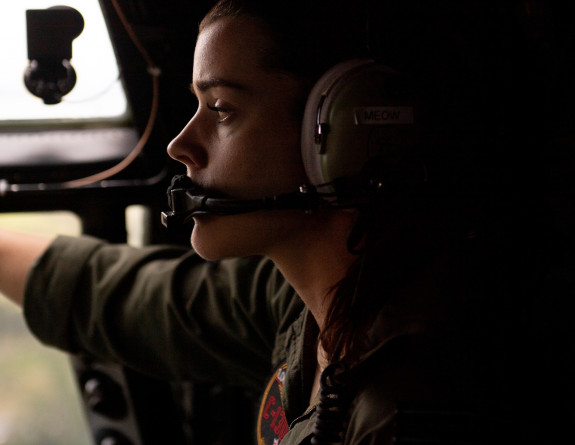
Personnel from No 40 Squadron during Exercise Silver Wing
For this year's Silver Wing, PTSU provided a support role to enable the parachute infiltration into the Area of Operations.
A PTSU liaison officer was appointed to liaise between NZ Army, No. 40 Squadron and Maintenance Support Squadron (which maintains, services, and packs the parachutes).
The parachute infiltration involved two Parachute Jump Instructors as despatchers on the aircraft, whose role was to ensure the parachutist was equipped correctly. They despatched the parachutist at the right time, in suitable environmental conditions in consultation with the aircraft crew.
On the ground there was also a Drop Zone safety officer, parachute rigger and medic to support the safe conduct of the activity.
Sergeant Josh Stone headed up the support element of the exercise. Part of that meant heading to the drop zones ahead of time to ensure they met requirements. He was also the advisor around options for the jumps and types of landings.
“There was a considerable amount of effort for both PTSU and the team who looks after the parachutes in terms of getting all the ancillary equipment, getting the parachutes ready and making sure they were all up to standard and ready to go."
One of the added complexities that comes up with night jumps is having a robust communication plan with all the safety elements on the ground.
"If someone goes missing at night it can be quite a mission to track them down.”
All the jumps were successful though and nobody suffered any injuries, SGT Stone said.
There were about three or four hours planning before the flights. Decisions were made on whether to do HALO jumps, or high altitude, high opening (HAHO) jumps, which involved leaving the aircraft from a good distance away, deploying the parachute straight away and steering toward the jump zone, he said.
“You can fly up to 25km under the canopy, but because there were few suitable drop zones in the Coromandel should the parachutist go off course, it was decided not to attempt those jumps."
Other challenges were logistical ones, he said.
"There was a considerable amount of planning for the drop zone areas because they were so remote.
“We were doing two patrols into two different drop zones, within close proximity of each and we had extra considerations to take into account for the beach landings. If the parachutes came into contact with salt water we need to have the resources on hand to get them back to Base Auckland to wash them within 24 hours," SGT Stone said.
The Defence Force routinely trains in communities around New Zealand in order to maintain realistic environments, and is very grateful to the residents for accommodating the event, which provided essential training to personnel.
